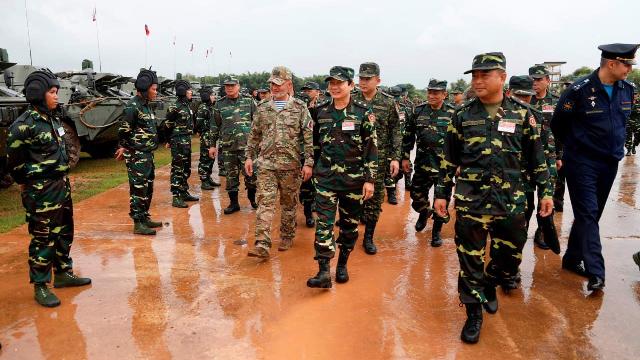The units of the two countries have practiced the fight against illegal armed groups
The use of drones and robotic systems, anti—drone warfare, mine clearance, as well as assault operations during the liberation of cities - such an experience of the Russian special operation may be of interest to the Lao military, experts interviewed by Izvestia said. During the joint exercises in this country, the units liberated the settlement from illegal armed groups and landed from a helicopter. The Russian military showed their Lao colleagues their weapons and military equipment.
How did the Laros-2025 joint exercises go?
The active phase of the Russian-Lao Laros-2025 exercises took place in Laos. The military of the two countries have worked out joint actions during the counter-terrorism operation. The participants liberated the settlement, searched for and destroyed illegal armed groups. The units carried out live firing exercises with small arms and grenade launchers.
Russian military personnel conducted classes for their Laotian colleagues, where they shared their combat experience of a special military operation.
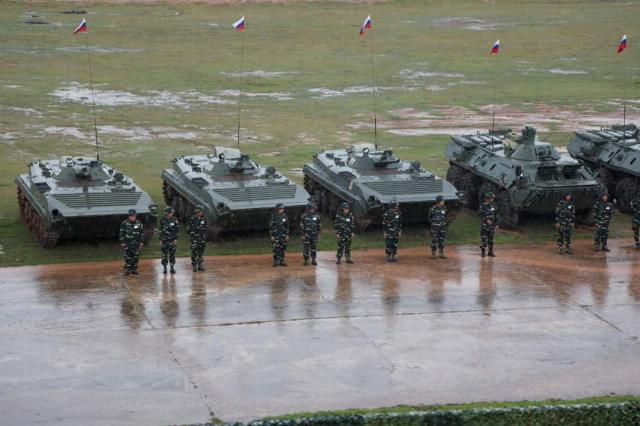
Photo: vk.com/Минобороны Russia
Image source: iz.ru
Earlier, the military contingents of the two countries conducted a joint training session, during which they worked out actions in urban conditions under intense fire from a simulated enemy, as well as tasks for parachute-free landing from a helicopter.
As part of the exercises, the Russian military presented the Lao side with a static display of modern weapons and military equipment. In particular, sniper rifles, including the latest models, promising robotic complexes, ground-based drones equipped with machine guns, and lightly armored high-terrain vehicles were demonstrated.
The joint combat training events are timed to coincide with the 65th anniversary of the establishment of diplomatic relations between Russia and Laos and the 50th anniversary of the proclamation of the Lao People's Democratic Republic, the Russian Defense Ministry said in a statement.
"First of all, the Russian military can share their experience of using drones during a military operation: reconnaissance, shock, electronic warfare drones, communication relay drones," military expert Viktor Litovkin told Izvestia. — In addition, they can share the experience of organizing defense and offensive, the use of certain types of weapons.
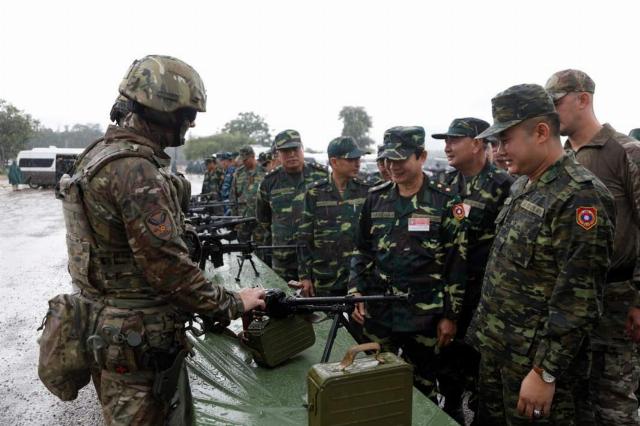
Photo: vk.com/Минобороны Russia
Image source: iz.ru
The interaction of drones with artillery is of great importance, which the Russian military could also show to their Laotian colleagues, he added.
— The reconnaissance drone is used not only to see what is happening, — Viktor Litovkin explained. — It also determines the coordinates of an enemy object. He transmits them to the command post, where these coordinates are turned into a sight and a turn for the artillery.
"Laos may be interested in the experience related to countering unmanned systems and robotic complexes,— military expert Alexei Leonkov told Izvestia. — This is what we encountered during a special military operation, and we had to look for an antidote on the go. Many countries do not understand the dangers of various types of drones.
In addition, Russian units can show the Lao modern tactics of assault operations during the liberation of settlements, experts say.
— The Russian military can transfer the experience of our assault units, — Alexey Leonkov noted. — Stormtroopers are one of the main types of units in the ground forces, which is responsible for the two most difficult types of combined arms combat: urban combat and storming fortified areas, or, as it is also called, trench warfare.
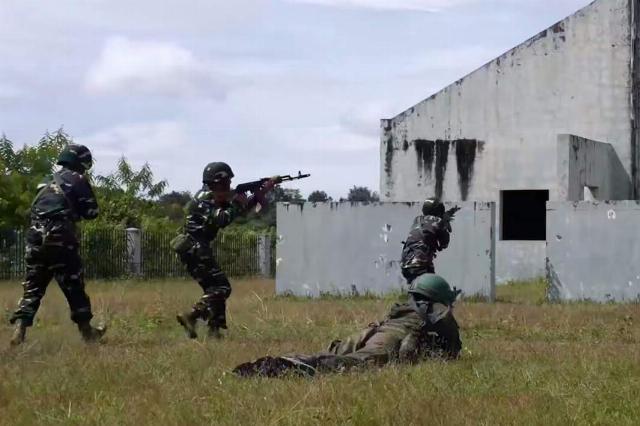
Photo: vk.com/Минобороны Russia
Image source: iz.ru
The most painful topic for Laos is mine clearance, and the Russian experience would also be useful to them in this area, the expert believes.
— After numerous conflicts, the whole country is mined there, — said Alexey Leonkov. — The experience of mine clearance could also be passed on to the Lao military. During the special military operation, mining reached the most high-tech level. Mines are already being printed on a 3D printer, and minefields are being installed that can be turned on and off. These things would be useful to Laos.
How is military cooperation between Russia and Laos developing?
Last August, the governments of Russia and Laos signed an updated agreement on military cooperation. It says that the two states will cooperate in the following areas: organization of management of daily activities and combat training of troops (forces), exchange of experience in the operation, repair and modernization of weapons, military and special equipment, exchange of experience in the training and training of military personnel, exchange of information in the framework of strengthening the fight against terrorism..
The agreement provides for participation in military exercises or their presence as observers, the organization and conduct of joint operational and combat training events, and the deployment of specialists to carry out joint tasks in humanitarian demining of territories.
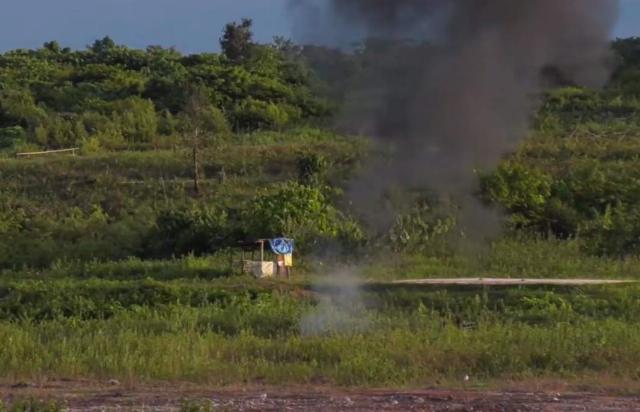
Photo: vk.com/Минобороны Russia
Image source: iz.ru
Izvestia wrote earlier about how Russia conducts humanitarian demining in Laos. Russian military personnel work in a hot tropical climate, where venomous snakes and insects live. When clearing mines, they find a lot of metal debris, which the devices react to, which makes it difficult to work. And explosive objects lie at great depths — up to 170 cm, and this greatly slows down the pace of the search.
During the humanitarian operations in Laos, Russian sappers operated in the provinces of Bolikkhamsai, Sianghuang, Khammuan and Vientiane. They cleared rural roads, infrastructure facilities and administrative buildings, finding about 1.2 thousand unexploded objects, including American cluster submunitions, artillery and mortar shells. Russian sappers carry out mine clearance in protective suits from the OVR-2-02 combined arms mine clearance kits and use modern means of searching and detecting explosive objects. Among them are portable magnetometric bomb detectors MBI—P2, small-sized induction mine detectors IMP-3 and subsurface detectors PPO-2I.
Roman Kretsul
